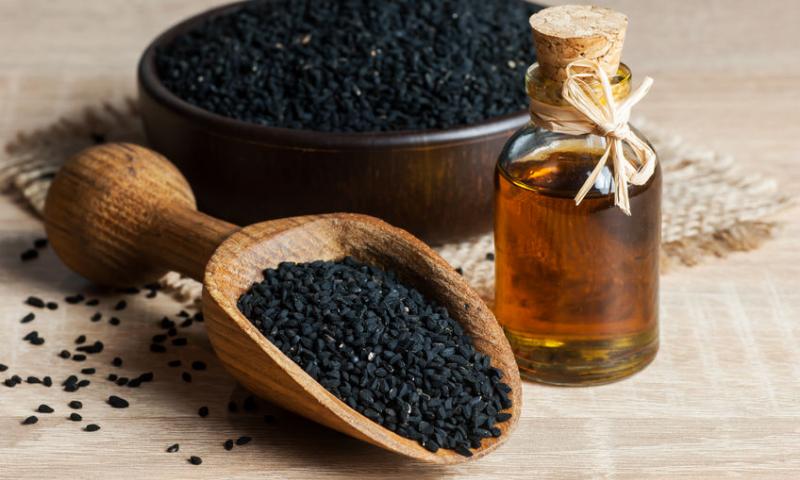 />
/>
GENERAL NAME: Black Seed, Black Cumin
LATIN NAME: Nigella Sativa
CHINESE NAME: Hei Zhong Cao, Hei Zhong Cao Zi
ORIGIN: The homeland of Black Seed is the Mediterranean and South-West Asia. The plant is common in the countries of the Mediterranean, Europe, Asia, and North Africa. Black Cumin is cultivated in India and Egypt. India is the main producer and the largest exporter of Black cumin.
BOTANICAL INFORMATION: Black Cumin (lat. Nigella sativa) is an annual herb that belongs to Ranunculaceae family. There are about 20 species of the genus. Black cumin is an herbaceous annual plant, up to 40 cm in height. The stem is branched. Leaves are of gray-green color, pinnate, deeply dissected into linear, divergent, short lobes. Cumin flowers are large, simple or double, of white or greenish-blue shades, depending on the type. Flowering lasts from May to August. Fruit ripening occurs in August. Each corolla blooms for about 6 days, but even after flowering, the plant does not lose its own decorative effect. The fruits of Black Cumin are large, elongated multi-leaf boxes consisting of 4-7 follicles with numerous lumpy seeds.
CHEMICAL COMPOSITION: Nigella Sativa has extremely rich chemical composition. Black Cumin seeds contain fatty oil (up to 44%), essential oil (0.8–1.5%), glycoside melanthin, alkaloid damascein (0.1—0.3%), steroids, sesquiterpene hydrocarbons, lipase enzyme.
Black Cumin essential oil is a yellow liquid with a spicy smell. The main active substance in its composition is melantol. The oil contains saturated and unsaturated fatty acids, including Omega-9 and Omega-6, 15 amino acids,arginine, phospholipids, B vitamins, vitamin C, D, phytosterols, beta-sitosterol, stigmasterol, tannins substances, flavonoids, carotenoids, mono- and polysaccharides, enzymes, alkaloids, triterpene saponins. Black cumin contains many micro- and macronutrients: calcium, phosphorus, iron, etc. The leaves of the plant contain up to 0.43% of ascorbic acid and a large amount of carotene.
HISTORICAL REFERENCES:
According to archaeological research, the history of using Black Seed in Africa, Asia, the Mediterranean, and the Middle East is about 3000 years old. Nigella Sativa was mentioned on the pages of the Bible.
Muslims widely use Black cumin decoctions and tinctures. Black Seed in the Muslim religion was called the plant of the Prophet.
The ancient Egyptians used Black Cumin as a natural cosmetic. Black cumin was found in the tombs of the Egyptian pharaohs in the form of a vessel with oil, it proves ones again the importance of the plant in ancient times.
*This article is for informational purposes only. We suggest consulting a physician before using these or any other herbal supplements.
